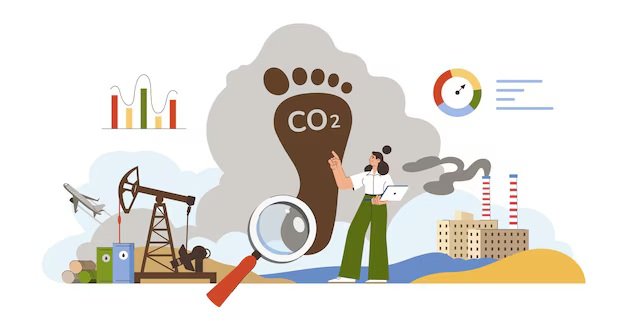Pros and Cons of Cloud Seeding
Cloud seeding is a form of weather modification that aims to encourage clouds to produce more rain or snow. The basic method is simple: operators release tiny particles into clouds — historically silver iodide, and more recently other materials such as hygroscopic salts — so that the microscopic droplets already in the cloud can freeze or collide and grow into raindrops or snowflakes that fall to the ground. Aircraft, ground-based flares and increasingly drones are used to deliver those particles into target clouds. According to the U.S. Government Accountability Office (GAO), cloud seeding is a decades-old approach that today pairs classic seeding agents with modern radar, satellites and computer models to try to make the practice more precise.
Cloud seeding is not a single global program. It is a patchwork of local and national efforts with very different goals: some programs aim to boost winter snowpack for water storage, others try to trigger summer rains for agriculture or to reduce hail during storms, and a few look for ways to slow wildfires by encouraging rainfall. The United Arab Emirates, Australia, parts of the western United States and several provinces in China are among the best-known users of the technique today. WIREDColorado Public RadioBloomberg.com

Pros — Where Cloud Seeding Has Helped Water Supplies and Firefighting
Supporters argue that cloud seeding is one of the few tools that can be deployed quickly at a local scale to try to increase water availability. Water managers in snow-dependent regions say that even a modest percentage increase in snow — concentrated when and where water is stored — can be economically valuable. In Australia, for example, cloud seeding has been a long-running part of programs to augment snowfall in the Snowy Mountains and to support hydroelectric reservoirs. A Snowy Hydro operations report documents years of seeding work and the tiny amounts of agent dispersed (measured in kilograms), and the company, until recently, treated seeding as one component of water management.
In the western United States, several states have expanded seeding efforts to offset two decades of drought. Local users — from water districts to ski-area operators — often describe cloud seeding as an insurance policy: not a substitute for conservation, but a possible small boost in tight years. Journalists covering the Rocky Mountain region reported farmers and water managers saying they hoped seeding could help fill reservoirs and protect crops during dry seasons. These real-world experiences matter because cloud seeding is rarely presented as a magic bullet; instead, operators emphasise limited, conditional gains when the right cloud physics are already present.
There are also technological innovations. New drone delivery systems and alternative seeding agents are intended to make operations cheaper, safer and more targeted. Private firms and national research programs — notably the UAE’s Rain Enhancement initiatives — have invested heavily in experiments, monitoring and seed-material development to improve the odds that seeding will produce measurable results. “We only enhance the amount of rain; we are not creating floods,” a cloud-seeding expert said while explaining that seeding works only when suitable clouds already exist.
Cons — Uncertainty, Environmental Concerns and Governance
The most important con is scientific uncertainty. A careful federal review concluded that cloud seeding can show benefit under some conditions but that the evidence base is mixed and often difficult to generalise. The GAO Office in 2024 found that research and observational advances have improved understanding, but many studies give widely varying estimates of how much additional precipitation results from seeding; outcomes depend heavily on local weather, cloud type and timing. In short, it can work, sometimes — and that “sometimes” is hard to forecast.
Cost and cost-effectiveness matter. Programs that run aircraft, ground flares and monitoring systems can be expensive. Snowy Hydro’s own review and public update show that, after years of operation, rising costs and uncertain benefits led the company to pause and then decide to end its cloud seeding program in 2025, saying the “escalating costs of the program outweighed its benefits.” That statement is a direct reminder that even established public operators treat seeding as a conditionally useful tool, not an automatic win.
Environmental and legal questions remain. Critics worry about redistribution — that increasing precipitation in one valley might deprive another — and about the long-term effects of dispersing seeding agents. The recorded amounts used in operations are small (for example, Snowy Hydro reported dispersing about 13.8 kilograms of silver iodide in 2023), but communities ask for independent monitoring and transparent risk assessments. A patchwork of state and national rules governs seeding in different places; the GAO noted that some U.S. states actively support seeding while others ban it or consider bans, leaving uncertain legal ground.
Public perception and misinformation can also be damaging. After extreme or unusual floods in the Gulf and Middle East, conspiracy theories linked cloud seeding to catastrophic storms — claims that meteorologists and independent reporters debunked because the scale of such events far exceeded what seeding can do. Most atmospheric scientists emphasise that seeding produces localised, modest changes and cannot create a storm from clear skies. Still, those public fears complicate honest community conversations about whether to run a seeding program.
Real-World Cases and What Experts Recommend — What Decision-Makers and Communities Should Ask
Below are short, factual case notes drawn from recent official reports and journal research so decision-makers can compare examples and scale.
| Program / study | Year(s) | Key fact or decision |
|---|---|---|
| Snowy Hydro (Australia) — operations and review | 2023–2025 | Snowy Hydro dispensed ~13.8 kg silver iodide in 2023; the company paused and then ended its program in 2025, citing rising costs and uncertain benefits. |
| U.S. federal assessment (GAO) | 2024 | GAO found cloud seeding can be effective under specific conditions, but evidence varies, and regulatory frameworks are fragmented. |
| UAE Rain Enhancement Program | 2015–present (major investment since 2015) | UAE invests in research and novel seeding materials and frames seeding as part of broader water security strategies. |
| Australia ensemble modelling (ACP paper) | 2016–2019 cases examined; published 2025 | New ensemble modelling shows seeding effects vary with meteorology and model setup; robust quantification remains challenging. |
| China (ground-based operations) — news report | 2025 | China increased ground-based rain enhancement activities in 2025 compared with the prior year as part of the agricultural drought response. |
| Private sector (Rainmaker and others) | 2023–2024 reporting | Startups are testing drone deployments and new business models, but face scientific, regulatory and public-trust hurdles. |
Together, these examples show three practical lessons that real operators and researchers now stress: monitor rigorously, set narrow objectives, and budget honestly. Monitoring means running seeded and unseeded control periods, investing in radar and ground observations, and publishing results. Narrow objectives mean choosing clear, measurable goals (for example, “increase snow water equivalent in this catchment by X% during suitable storms”) rather than vague claims of “more water.” Budget honesty means accounting for long-term aircraft/drone costs, staffing, and the repeated investments needed for science and community outreach. The GAO and independent academic studies repeatedly recommend stronger monitoring, independent evaluation and clearer policy frameworks before programs scale.
Real people’s voices show the human side of these technical debates. In Colorado and other Rocky Mountain communities, water managers and ranchers interviewed by regional reporters say they see seeding as one tool among many in a drying landscape; they stress that community buy-in and transparent results matter more than promises. On the other side, some environmental groups and local officials pushed back on expanding programs without stronger evidence and public review. Those contrasting real stories — managers hoping for small gains and residents demanding proof — are not fictional; they are what shape whether a program succeeds or fails on the ground.
If you are a policymaker, water manager or community leader considering cloud seeding, here are concrete, evidence-based steps to take (phrased as practical next moves rather than abstract advice): require public release of monitoring data and an independent scientific evaluation before committing multiyear budgets; start with limited, well-measured pilot projects that include unseeded controls; budget for both operations and independent reviews; plan for transparent community briefings and a complaints/oversight process; and pair any seeding program with stronger demand-management and conservation measures so seeding is only one element of resilient water planning. These steps are consistent with the recommendations and cautionary findings in recent official reviews and peer-reviewed modelling work.
Finally, keep the scale of your expectations realistic. A balanced assessment in recent governmental and scientific reports is clear: cloud seeding can, under the right atmospheric conditions, increase local precipitation modestly — enough to matter in tight water systems if carefully targeted and monitored — but it is not a substitute for broad climate adaptation, conservation, or infrastructure investment. In the words of reviewers and program managers, seeding is a small, conditional lever in a much larger water-security toolbox.







